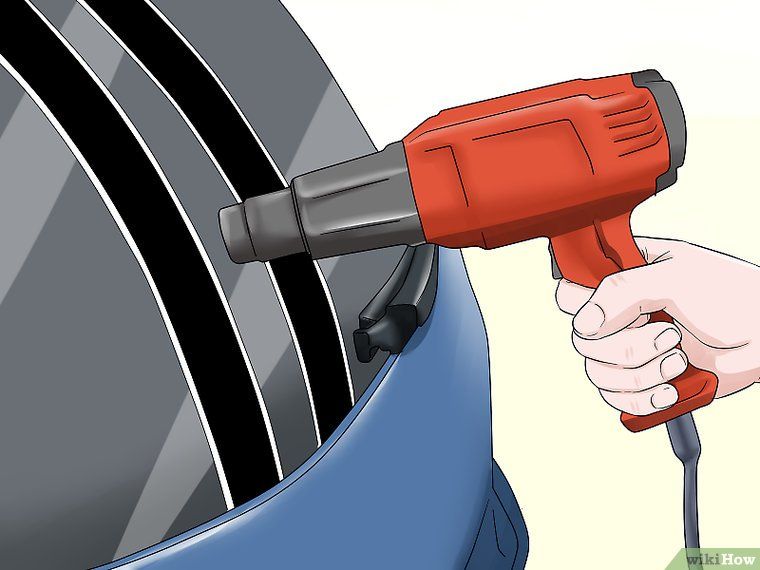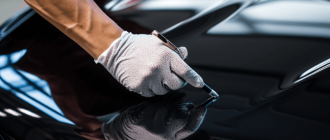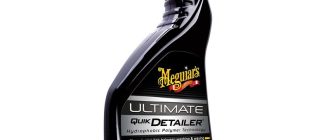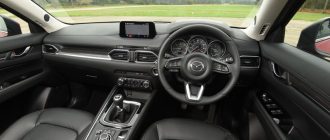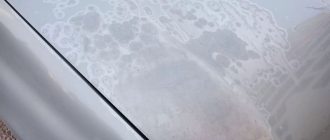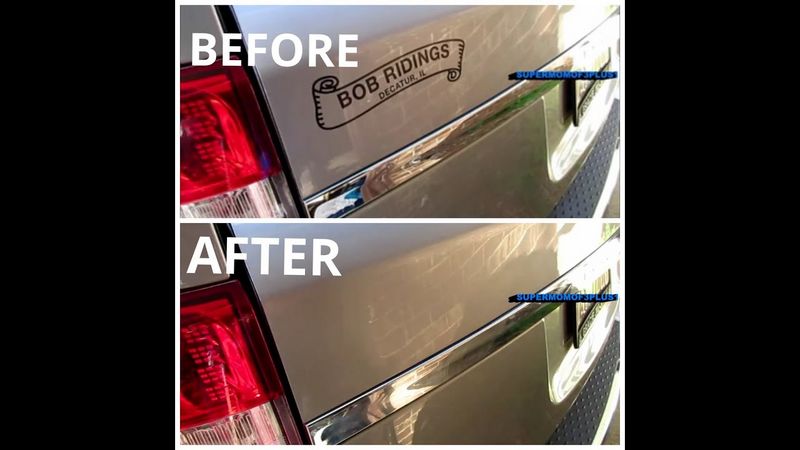
How to Remove Stickers and Decals from Your Car
Stickers and decals can be a fun way to personalize your car, but what if you want to remove them? Whether you’re looking to sell your car, change the look, or simply get rid of an outdated bumper sticker, it’s important to know the proper techniques to avoid damaging the car’s paint. From stubborn residue to adhesive goo, removing stickers and decals may seem like a daunting task, but with a few simple steps, you can have your car looking like new in no time.
First, it’s important to start with a clean surface. Remove any dirt or debris from the car using a gentle car wash soap and a soft cloth. This will ensure that the sticker or decal peels off easily without leaving any residue behind.
Next, try using heat to loosen the adhesive. You can use a hairdryer on a low setting or a heat gun, but be careful not to overheat the area. Hold the heat source a few inches away from the sticker or decal and move it back and forth until the adhesive begins to melt. This will make the sticker easier to peel off.
Once the sticker or decal is heated, carefully peel it off. Start at one corner and slowly pull it away from the car’s surface, making sure to keep it at a low angle. If the sticker starts to tear or is difficult to remove, you can apply more heat or use a plastic scraper to gently lift it off.
After removing the sticker or decal, you may notice some residue left behind. To remove this, use a gentle adhesive remover or rubbing alcohol. Apply a small amount to a clean cloth and gently rub the residue until it is gone. Be sure to follow up with a clean cloth and some soapy water to remove any remaining residue or cleaner.
By following these simple steps, you can remove stickers and decals from your car without damaging the paint. Whether you’re tackling a bumper sticker or a window decal, a little patience and the right tools will have your car looking clean and sticker-free in no time.
Gather the necessary tools
Before you start removing stickers and decals from your car, it is important to gather the necessary tools to make the process easier and more efficient. Here is a list of essential tools you will need:
|
|
These tools will help you effectively remove stickers and decals from your car’s surface without leaving any residue or causing damage. The clean cloth or rag can be used to wipe the car’s surface and remove any dirt or grime before starting the removal process.
The plastic scraper or credit card will help you peel off the stickers or decals without scratching the car’s paint. Gently insert the scraper or card under the edge of the sticker and slowly lift it away from the surface.
Rubbing alcohol or adhesive remover can be used to dissolve any remaining adhesive or goo that may be left behind after peeling off the stickers or decals. Apply a small amount of alcohol or adhesive remover to a clean cloth and gently rub the residue until it is fully removed.
A hairdryer or heat gun can be used to soften the adhesive and make it easier to peel off the stickers or decals. Apply heat to the stickers or decals for a few seconds until the adhesive becomes soft, then use the plastic scraper or credit card to peel them off.
After removing the stickers or decals, it is important to clean the car’s surface thoroughly. Use the bucket of warm, soapy water, along with a sponge or soft brush, to wash away any remaining residue or dirt. Dry the surface using microfiber towels to avoid leaving any streaks or water spots.
Lastly, it is recommended to wear protective gloves during the removal process to protect your hands from any chemicals or sharp edges. Safety should always be a priority when working with these tools and substances.
By gathering these necessary tools, you will have everything you need to successfully remove stickers and decals from your car, leaving behind a clean and residue-free surface.
Prepare the surface
Before attempting to remove stickers or decals from your car, it is important to prepare the surface properly. This will help ensure a clean removal without any residue left behind.
Here are some steps to follow:
| 1. | Start by thoroughly washing your car to remove any dirt or debris that may be on the surface. This will help prevent scratching or damaging the paint when you remove the stickers. |
| 2. | Gently peel off any loose or easily removable decals by hand. This will make the removal process easier and help minimize any adhesive residue. |
| 3. | If there is any adhesive residue left on the car after peeling off the decals, you can use a commercial adhesive remover or rubbing alcohol to gently remove it. Apply a small amount of the remover or alcohol to a clean cloth and rub the residue in a circular motion until it is fully dissolved. Be careful not to scrub too hard, as this may damage the car’s paint. |
| 4. | If the decal or sticker has been on the car for a long time and is particularly stubborn to remove, you can try using a hairdryer or heat gun to heat the adhesive. This will make it easier to peel off the decal without leaving behind any residue. Be sure to hold the hairdryer or heat gun a few inches away from the car’s surface to avoid causing any damage. |
By properly preparing the surface of your car before attempting to remove stickers or decals, you can ensure a clean and residue-free result. This will help maintain the appearance of your car and prevent any damage to the paint.
Use heat to loosen the adhesive
To remove decals and stickers from your car, you can use heat to loosen the adhesive. Start by heating up the decal or sticker with a hairdryer or heat gun. Hold the hairdryer or heat gun about 6 inches away from the surface and move it back and forth. The heat will soften the adhesive and make it easier to remove the sticker.
Once the adhesive has been heated, use a plastic scraper or your fingernail to gently peel off the sticker. Be careful not to scratch the surface of your car. If the sticker doesn’t come off easily, you can reapply heat and try again.
After removing the sticker or decal, you may notice some sticky residue left behind. To clean this residue, you can use goo remover or rubbing alcohol. Apply a small amount of the goo remover or rubbing alcohol to a clean cloth and gently rub the residue until it is gone. Be sure to test the goo remover or rubbing alcohol on a small, inconspicuous area of your car first to make sure it doesn’t damage the paint.
Once the residue has been removed, you can wash and wax your car as usual to restore its shine. With these simple steps, you can easily remove stickers and decals from your car without damaging its paint.
Peel off the sticker or decal
Once you have prepared the necessary tools and heated the sticker or decal, it’s time to remove it from your car’s surface. Begin by firmly grabbing one corner or edge of the sticker or decal with your fingers or a plastic scraper.
Slowly and carefully start peeling the sticker or decal away from the car, making sure to pull it in the opposite direction of its original application. If the sticker or decal starts to tear or break, use the heat gun or hairdryer to reheat the adhesive and make the removal process easier.
Continue peeling off the sticker or decal, applying more heat when necessary, until the entire sticker or decal has been removed. Be patient and take your time to avoid damaging your car’s surface.
After peeling off the sticker or decal, there might be some residual adhesive left on the car. This sticky residue, commonly known as “goo,” can be removed using adhesive removers or household cleaning products.
Make sure to follow the manufacturer’s instructions when using an adhesive remover. Apply a small amount to a clean cloth or sponge, then gently rub the residue until it starts to dissolve. Wipe away any remaining residue with a clean cloth or sponge soaked in warm soapy water.
Once you have removed the sticker or decal and cleaned any leftover adhesive, your car’s surface should be clean and free of any marks or residue. Congratulations on a successful sticker removal!
Remove any sticky residue
After you have successfully peeled off the stickers or decals from your car, you may notice some sticky residue or goo left behind on the surface. To effectively remove this residue, you will need an adhesive remover.
Here are the steps to remove any sticky residue:
| 1. | Gather the necessary supplies, such as an adhesive remover, a clean cloth or sponge, and warm soapy water. |
| 2. | Apply a small amount of adhesive remover onto the residue and let it sit for a few minutes to soften the adhesive. |
| 3. | Gently rub the residue with a cloth or sponge in a circular motion. Be careful not to scrub too hard, as this may damage the car’s surface. |
| 4. | Rinse the area with warm soapy water to remove any excess adhesive remover. |
| 5. | Dry the area with a clean cloth. |
By following these steps, you can easily remove any sticky residue left behind from the stickers or decals on your car, giving it a clean and polished look.
Use a solvent or adhesive remover
If the sticker or decal on your car leaves behind residue or is difficult to peel off, you may need to use a solvent or adhesive remover. This type of product can help break down the sticker’s adhesive, making it easier to remove.
Here’s how to use a solvent or adhesive remover:
- Ensure the area is clean and free of dirt or debris. This will help the solvent or adhesive remover work effectively.
- Apply a small amount of the solvent or adhesive remover directly onto the sticker or decal.
- Allow the product to sit on the sticker for a few minutes to penetrate the adhesive.
- Gently peel off the sticker using a plastic scraper or your fingernail. Be careful not to scratch the car’s surface.
- If there is any stubborn residue left behind, apply more of the solvent or adhesive remover and let it sit for a few more minutes.
- Use a clean cloth or paper towel to wipe away the residue, repeating the process if necessary.
- Once the sticker and residue are completely removed, clean the area with soap and water to remove any remaining goo or adhesive.
Remember to read and follow the instructions on the solvent or adhesive remover product you choose, as different brands may have specific recommendations for use.
Using a solvent or adhesive remover can be an effective way to remove stubborn stickers and decals from your car, leaving it clean and residue-free.
Test the solvent on a small area
Before using any solvent to remove sticker residue from your car, it’s important to test it on a small, inconspicuous area. This will ensure that the solvent does not damage or discolor the paint.
Start by choosing a small spot on your car, such as the lower corner of a window or a less noticeable area on the bumper. Apply a small amount of the solvent onto a clean cloth and gently rub it on the chosen spot. Let it sit for a few minutes, then wipe it off with a clean cloth.
If the solvent does not cause any damage or discoloration, it is likely safe to use on the rest of your car. However, if you notice any adverse effects such as fading or peeling paint, discontinue use immediately.
Testing the solvent beforehand is especially important if you are dealing with a sensitive or custom-painted car. Certain solvents may be too harsh and can remove more than just the sticker residue, leaving behind a dull or damaged finish.
By taking the time to test the solvent on a small area, you can ensure that you will be able to safely and effectively remove the sticker residue without causing any harm to your car’s paintwork.
Apply the solvent to the sticker or decal
Once you have gathered all the necessary supplies and prepared your work area, it’s time to apply the solvent to the sticker or decal on your car. The solvent, commonly known as “goo remover” or adhesive remover, is designed to break down the sticky residue left behind by decals or stickers.
1. Start by carefully peeling off as much of the sticker or decal as possible. Use your fingernails or a plastic scraper to gently lift the edges and peel it away from the car surface.
2. Once you have removed as much of the sticker as you can, apply a generous amount of the solvent directly onto the remaining residue. Make sure to cover the entire affected area.
3. Allow the solvent to penetrate the residue for a few minutes. The recommended wait time is usually stated on the product packaging. This will give the solvent enough time to break down the adhesive and make it easier to remove.
4. After the designated waiting period, use a clean cloth or a plastic scraper to gently rub or scrape away the residue. Be careful not to scratch or damage the car’s paint. If necessary, you can reapply the solvent and repeat the process until the residue is completely removed.
5. Once all the residue has been removed, use a clean cloth and some warm, soapy water to wash the area where the sticker or decal was located. This will help remove any remaining solvent or residue.
6. Finally, rinse the area with clean water and dry it with a clean towel. This will ensure that there are no streaks or water spots left behind.
By following these steps, you can safely and effectively remove decals or stickers from your car without causing any damage to the paint. Remember to always use caution and follow the instructions provided by the manufacturer of the solvent or adhesive remover.
Let the solvent sit for a few minutes
After applying the solvent to the sticker or decal on your car, it is important to let it sit for a few minutes. This allows the solvent to penetrate the adhesive and loosen it, making it easier to remove.
During this time, the solvent will work its magic by breaking down the adhesive that holds the sticker or decal in place. This will help to remove the sticker without leaving any residue or goo behind.
While the solvent is doing its job, you can prepare for the next step of the process. Make sure you have a clean and dry cloth or sponge handy. This will be used to wipe away any leftover adhesive or residue that may be left behind after peeling off the sticker or decal.
Remember to follow the instructions provided with the solvent you are using, as different products may have different wait times. In general, it is best to let the solvent sit for at least a few minutes before attempting to remove the sticker or decal.
Tip: If the sticker or decal is particularly stubborn, you can try gently peeling it off while the solvent is still sitting. This may help to loosen the adhesive even further, making the removal process easier.
Scrape off the sticker or decal
To remove stickers or decals from your car’s surface, you will need to scrape them off. It’s important to be careful during this process to avoid damaging the car’s paint or leaving behind adhesive residue.
Here’s how to remove stickers and decals from your car:
- Start by using your fingers or a plastic scraper to gently peel off as much of the sticker or decal as possible. Try to lift and peel from one corner to avoid tearing the sticker.
- If the sticker or decal still doesn’t come off easily, you can use a heat gun or hairdryer to soften the adhesive. Hold the heat gun or hairdryer about 6 inches away from the sticker and move it in a back-and-forth motion until the adhesive begins to melt.
- Once the adhesive is softened, use a plastic scraper or credit card to carefully scrape off the remaining sticker or decal. Be gentle and avoid applying too much pressure, as this could damage the car’s paint.
- If there is any adhesive residue left on the car’s surface, you can use a commercial adhesive remover or rubbing alcohol to clean it off. Apply the adhesive remover or alcohol to a clean cloth and gently rub the residue until it is completely dissolved.
- After removing the sticker or decal and cleaning off any residue, wash your car with soap and water to remove any remaining traces of adhesive or cleaner.
By following these steps, you should be able to easily remove stickers and decals from your car without causing any damage or leaving behind any traces of adhesive. Remember to always be gentle and patient while scraping off the stickers.
Clean and polish the area
After you have successfully peeled off and removed the stickers or decals from your car, you may notice some residue or goo left behind. It’s important to clean this area thoroughly to maintain the appearance of your car.
Here are some steps to clean and polish the area:
- Start by using a clean cloth or sponge to wipe away any loose residue on the surface.
- Apply a small amount of adhesive remover or rubbing alcohol onto a cloth and gently rub the remaining residue in a circular motion. Be careful not to scrub too hard as this can damage the car’s paint.
- Continue to gently rub until the residue has been completely removed.
- Once the area is residue-free, use a clean cloth to polish the cleaned surface.
- If there are any stubborn spots, you can repeat the process or try using a plastic scraper to carefully scrape off the residue.
Remember to always test any cleaning product on a small, inconspicuous area of your car first to ensure it does not damage the paint.
By following these steps, you can effectively clean and polish the area where the stickers or decals were once attached, leaving your car looking clean and sleek.
Question-answer:
What is the best method for removing stickers from my car?
The best method for removing stickers from your car is to use a hairdryer or heat gun to warm the sticker, then peel it off slowly. If any residue remains, you can use rubbing alcohol or a commercial adhesive remover to clean it up.
Can I use a razor blade to remove stickers from my car?
While using a razor blade can be effective, it’s important to be cautious. Make sure to hold the razor blade at a low angle and scrape gently to avoid damaging the car’s paint. It’s recommended to use other methods, such as heating the sticker or using adhesive remover, before resorting to a razor blade.
What should I do if the sticker leaves behind a sticky residue?
If the sticker leaves behind a sticky residue, you can try using rubbing alcohol or a commercial adhesive remover to clean it up. Apply the alcohol or adhesive remover to a clean cloth and gently rub the residue until it is removed. Make sure to test the product on a small inconspicuous area of the car first to ensure it doesn’t damage the paint.
Can I use a hairdryer instead of a heat gun to remove stickers?
Yes, you can use a hairdryer instead of a heat gun to remove stickers from your car. Simply set the hairdryer to a high heat setting and hold it a few inches away from the sticker. Heat the sticker for a few minutes until it becomes warm, then slowly peel it off. If any residue remains, you can follow up with rubbing alcohol or adhesive remover to clean it up.
Is it safe to use rubbing alcohol on my car’s paint?
Rubbing alcohol is generally safe to use on car paint, but it’s always a good idea to test it on a small inconspicuous area first. Apply the rubbing alcohol to a clean cloth and gently rub the residue until it is removed. If the rubbing alcohol doesn’t adversely affect the paint, you can continue using it. If you’re unsure, you can try a commercial adhesive remover specially formulated for use on car paint.
What is the best way to remove stickers and decals from my car?
The best way to remove stickers and decals from your car is to use a heat source, like a hairdryer or heat gun, to warm up the adhesive. Then, gently peel off the sticker or decal using a plastic card or your fingers. If there is any residue left behind, you can use a sticker remover solution or rubbing alcohol to clean it off.
Can I use a razor blade to remove stickers from my car?
While a razor blade can work to remove stickers from your car, it is not recommended. Scraping too hard with a razor blade can damage the paint or the surface of your car. It’s best to start with a heat source and a plastic card or your fingers to remove the sticker. If there is any remaining adhesive, you can try using a sticker remover solution or rubbing alcohol before considering a razor blade as a last resort.
